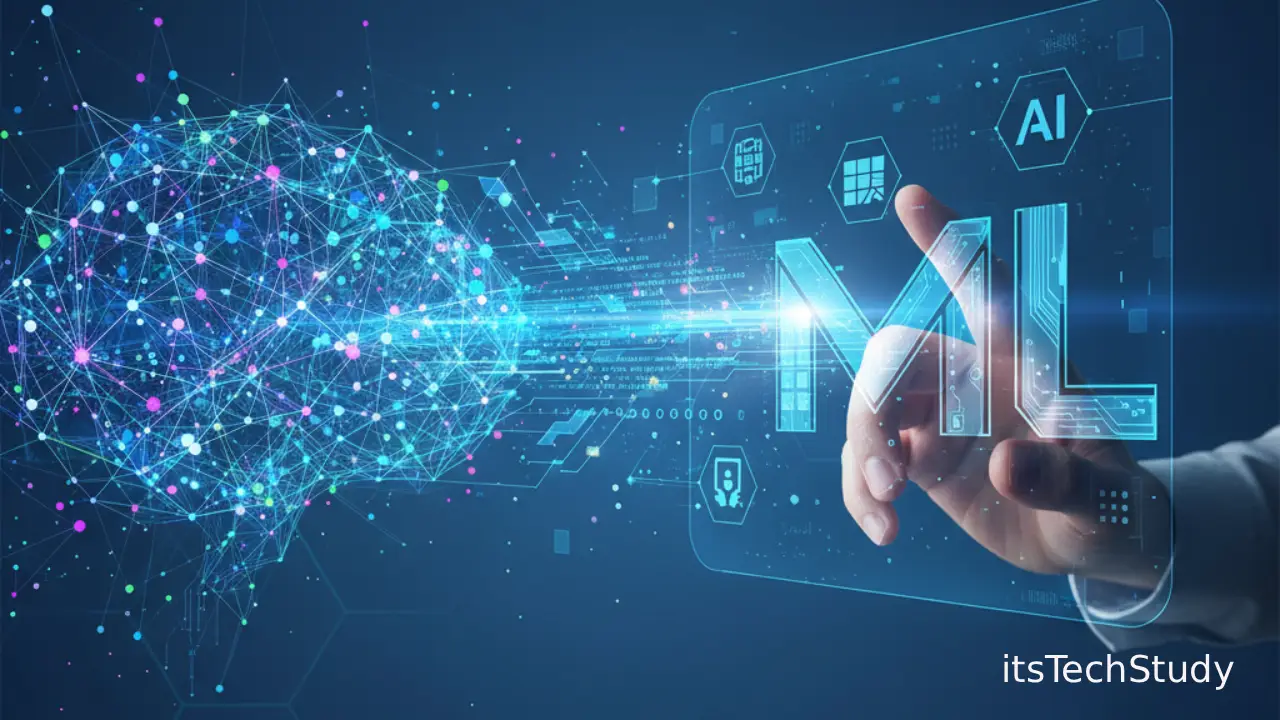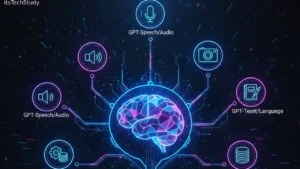Introduction: Why Understanding Machine Learning Matters Today
Not long ago, artificial intelligence (AI) was considered science fiction. Today, AI and machine learning (ML) power many of the tools we use daily—from smart devices and recommendation systems to self-driving cars, medical diagnostics, and cybersecurity solutions.
The excitement around AI is undeniable. However, many people still don’t fully understand the technologies behind machine learning that make these innovations possible. This gap in understanding often leads to misconceptions, overhype, or even resistance to adoption.
As we move into 2025, with the rise of generative AI, edge computing, and intelligent automation, knowing how machine learning works has never been more important. This guide breaks down the essential technologies and explains how they’re shaping the future of technology.
What Is Machine Learning?
Machine learning is a branch of artificial intelligence that enables computers to learn and improve from data without being explicitly programmed.
Instead of hard-coding instructions, developers provide large datasets, and the system uses algorithms to detect patterns, improve accuracy, and make predictions.
Every time Netflix suggests a movie, Amazon recommends a product, or Google Maps finds you the fastest route, machine learning is at work behind the scenes.
Why Machine Learning Matters in 2025
Businesses and organizations now deal with massive, constantly changing datasets. Traditional rule-based systems struggle to keep up with evolving challenges—whether in cybersecurity, personalization, or automation.
That’s where machine learning pipelines come in. These automated workflows streamline processes, reduce human error, and adapt models as new data emerges. For learners and professionals alike, understanding ML pipelines is key to building real-world, production-ready solutions.
Types of Machine Learning
Machine learning isn’t a one-size-fits-all approach. Different problems require different learning methods.
1. Supervised Learning
- Uses labeled datasets to train models.
- Predicts categories (classification) or numbers (regression).
- Examples: detecting spam emails, predicting housing prices.
2. Unsupervised Learning
- Works without labeled data to find hidden patterns.
- Useful for clustering, segmentation, and anomaly detection.
- Examples: customer grouping, fraud detection.
3. Reinforcement Learning
- Trains agents by rewarding correct actions and penalizing mistakes.
- Common in robotics, gaming, and autonomous decision-making.
4. Semi-and Self-Supervised Learning
- Useful when labeled data is limited.
- Generates labels or uses partially labeled data.
- Gaining popularity in fields like natural language processing (NLP) and computer vision.
The Machine Learning Pipeline at a Glance
A machine learning pipeline is a structured workflow that moves data from raw input to a deployed, monitored model. Its main stages include:
- Data collection and validation
- Preprocessing and feature engineering
- Data splitting (training, validation, test sets)
- Model selection and training
- Evaluation and optimization
- Deployment
- Monitoring and continuous learning

By treating ML as an engineered lifecycle, teams can ensure reliable, scalable, and sustainable systems.
Key Technologies Behind Machine Learning
Machine learning depends on a blend of technologies. Let’s explore them.

1. Data: The Fuel of ML
- Structured data: numbers, spreadsheets, databases
- Unstructured data: images, videos, text, social media
- Big Data tools: Hadoop, Apache Spark, Google BigQuery
Challenge: Poor-quality or biased data can mislead models.
2. Algorithms: The Brain of ML
- Supervised algorithms: Decision Trees, Random Forest, Support Vector Machines
- Unsupervised algorithms: Clustering, Principal Component Analysis
- Deep learning: Neural networks for images, speech, and text
3. Programming Languages and Frameworks
| Technology | Role in ML | Examples |
|---|---|---|
| Python | Beginner-friendly, versatile | TensorFlow, Scikit-learn |
| R | Stats and visualization | Caret, ggplot |
| Java/Scala | Enterprise-scale ML | Apache Spark MLlib |
| Julia | High-performance computing | Flux.jl |
4. Cloud Computing and Infrastructure
ML requires huge computing resources. Cloud AI platforms provide scalable infrastructure:
- Google Cloud AI
- AWS Machine Learning
- Microsoft Azure AI
They give access to GPUs, TPUs, and distributed computing, cutting costs for startups and enterprises.
5. Neural Networks and Deep Learning
Inspired by the brain, neural networks process information in interconnected layers:
- CNNs (Convolutional Neural Networks): Image recognition
- RNNs (Recurrent Neural Networks): Speech and time-series analysis
- Transformers: NLP tasks like chatbots and translation
Deep learning powers autonomous vehicles, medical imaging, and smart assistants.
6. Data Storage and Management
Efficient storage is critical:
- SQL/NoSQL databases
- Data lakes (Amazon S3, Azure Data Lake)
- Real-time streaming (Apache Kafka)
7. Cybersecurity and Privacy in ML
Since ML relies on sensitive data, strong safeguards are vital:
- Encryption
- Blockchain for secure exchanges
- Federated learning (privacy-preserving training)
Pros and Cons of Machine Learning Technologies
Advantages
- Automates complex decision-making
- Improves accuracy over time
- Boosts efficiency across industries
- Enables personalization in apps and services
Challenges
- Requires large, high-quality datasets
- Computationally expensive
- Risk of bias in results
- Raises privacy and security concerns
Real-World Applications of Machine Learning
- Healthcare – Disease diagnosis, drug discovery
- Finance – Fraud detection, market prediction
- Retail – Customer personalization, demand forecasting
- Transportation – Self-driving cars, route optimization
- Cybersecurity – Detecting threats and anomalies
The Future of Machine Learning: Trends in 2025
Looking ahead, ML is evolving rapidly with:
- Generative AI creating human-like text, images, and video
- Edge AI running models on devices, not just in the cloud
- Quantum computing accelerating complex ML tasks
- IoT integration enabling smarter homes, factories, and cities
Conclusion: Why Learning the Tech Behind ML Matters
Machine learning isn’t magic—it’s built on data, algorithms, cloud computing, and smart frameworks. Understanding these technologies helps businesses and individuals stay ahead in a world driven by AI advancements.
As latest technology trends in 2025 unfold, from deep learning to IoT integration, ML will continue to transform industries. The question isn’t whether machine learning will change the future—it already has. The real challenge is: are you ready to embrace it?
Frequently Asked Questions (FAQs)
Q1: How is AI different from ML?
Ans: AI is the broader goal of building smart systems. Machine learning is a subset of AI that learns from data.
Q2: Do I need coding skills to learn ML?
Ans: Not necessarily. Platforms like Google AutoML let you build models without coding, but learning Python or R is highly recommended.
Q3: Can ML be trusted in industries like healthcare?
Ans: Yes, but strict regulations and privacy measures must be followed.
Q4: What tools should beginners start with?
Ans: Python, TensorFlow, Scikit-learn, and cloud ML platforms are great starting points.
Q5: How does ML improve cybersecurity?
Ans: It identifies unusual activities, phishing attempts, and malware faster than traditional systems.
Q6: Will ML replace jobs?
Ans: It will automate repetitive work but also create new roles in AI development, data science, and system management.












No Comments Yet
Be the first to share your thoughts.
Leave a Comment